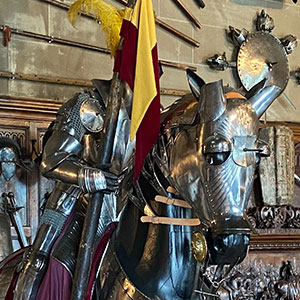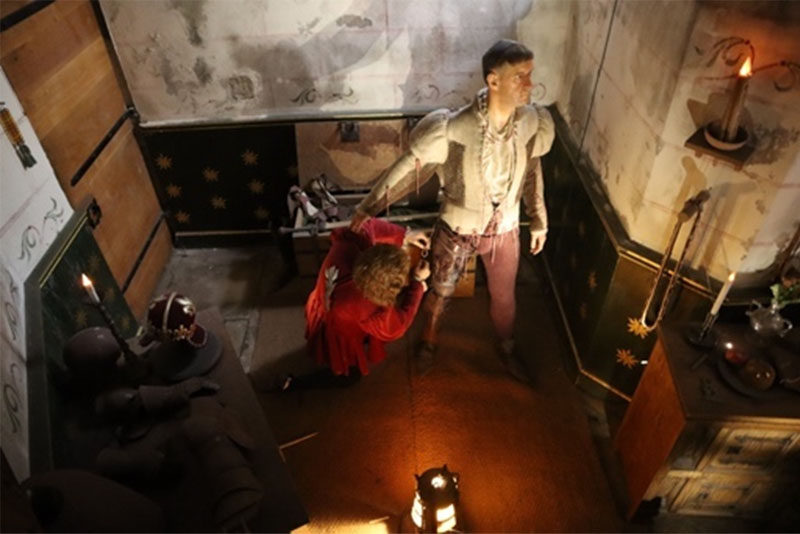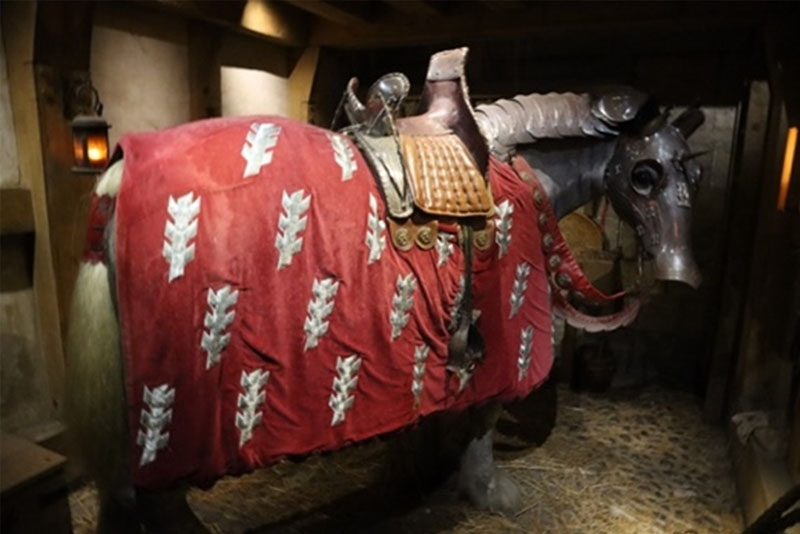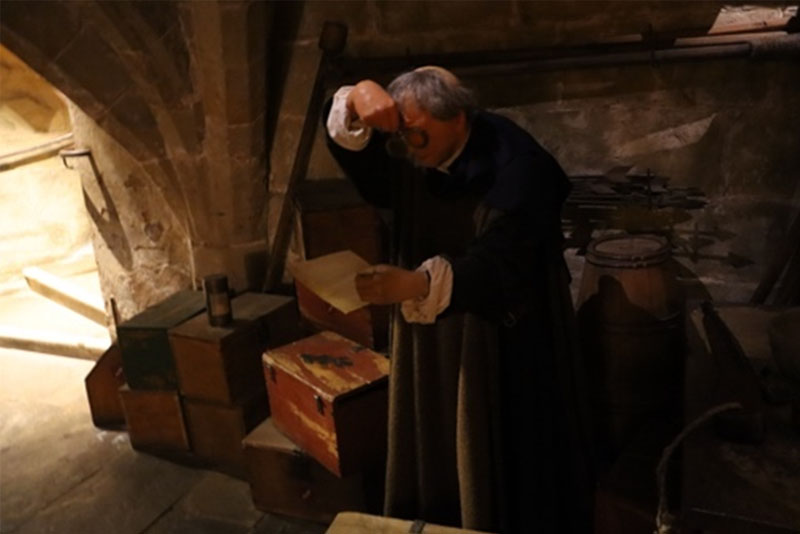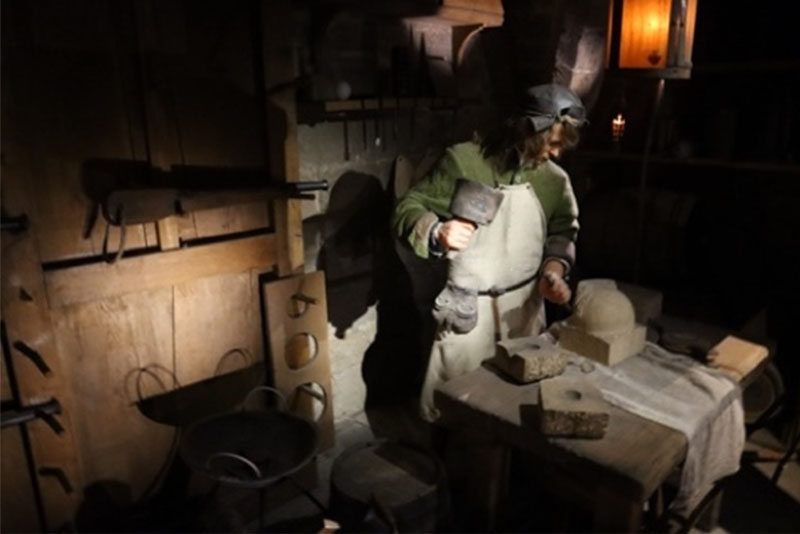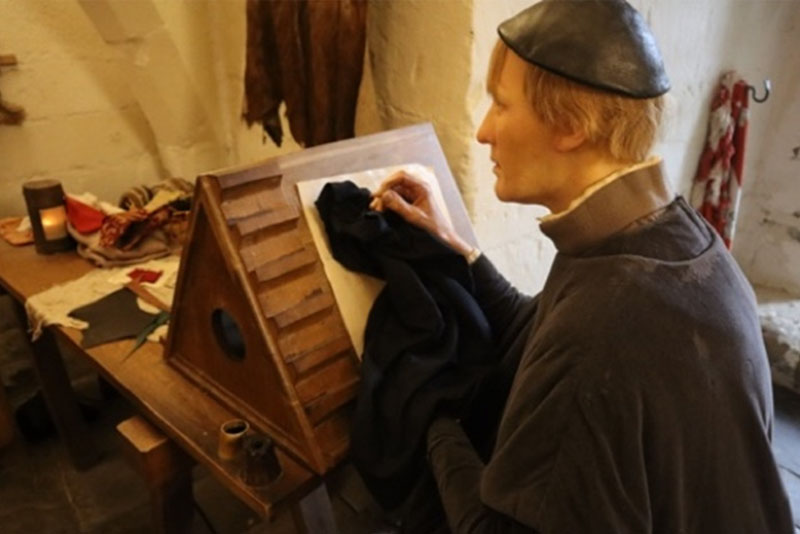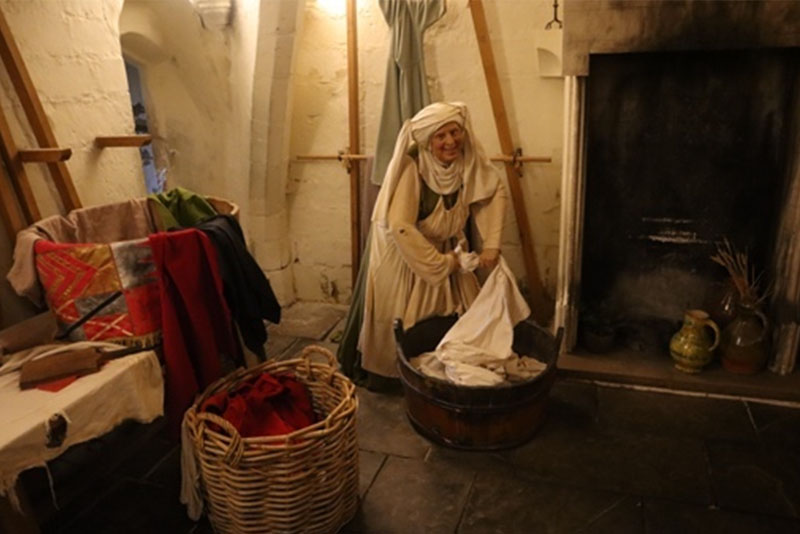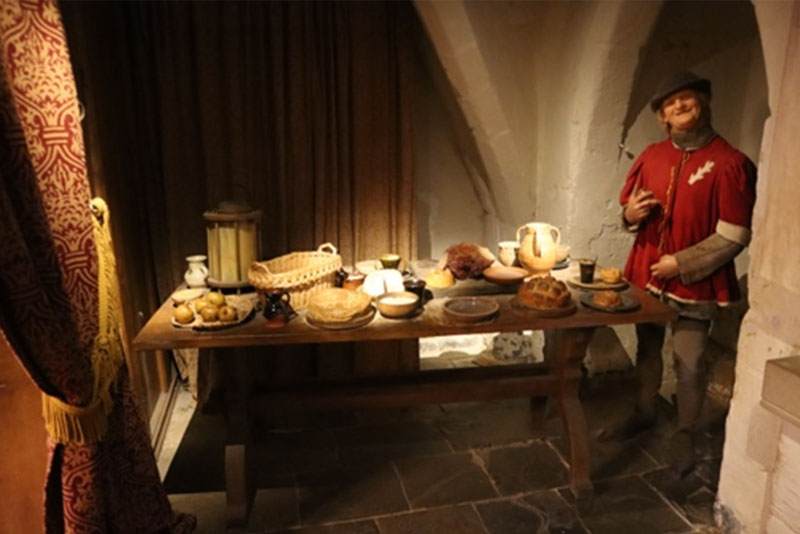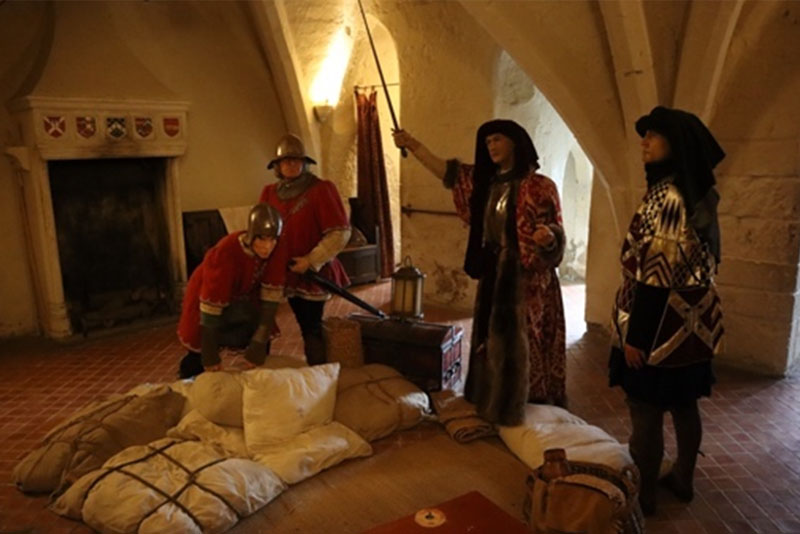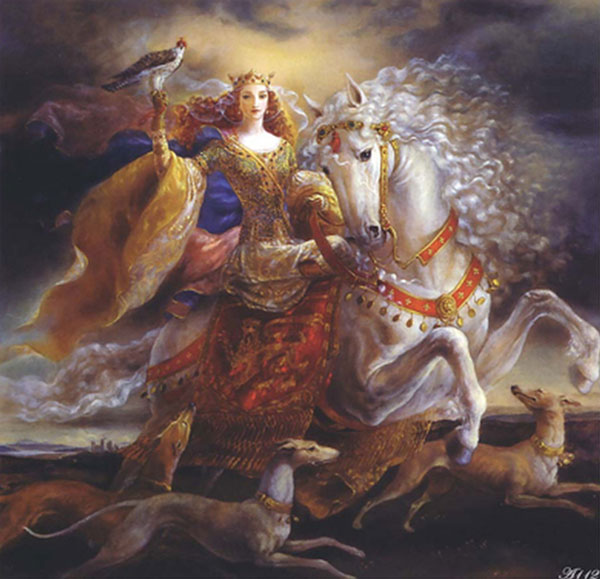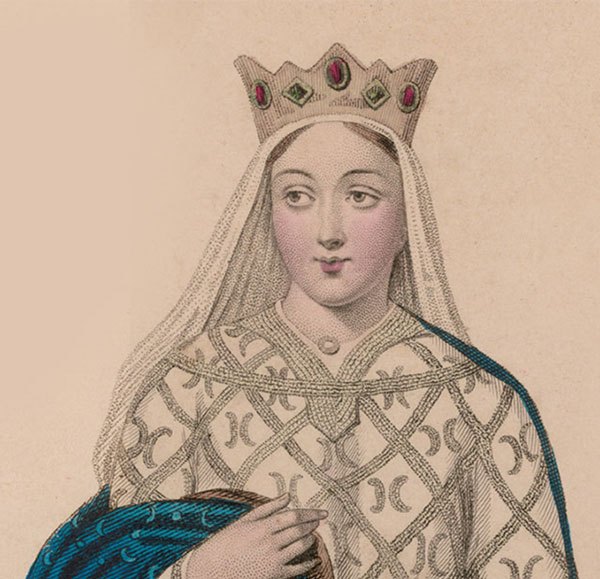Activity 6
A medieval castle at work
Step back in time to the year 1471 - the Battle of Barnet. The War of the Roses is intensifying and the earl of Warwick is on the side of the Lancastrians, whilst the exiled King Edward and his House of York are fighting to reclaim his throne.
Men and women are busy everywhere, all playing their part in these crucial preparations.
Richard Neville the 16th Earl of Warwick is fitted with his armour by his squire William who is 13 years old and wants one day to become a knight. Let’s see what other tasks are being carried out by skilled artisans of the time...
Your Task
Carefully examine the following images and answer the questions that follow below or in this Word Doc version to save your answers.
As you can already see, medieval castles employed a large number of people, sometimes as many as 50. As well as those specialised in preparing the lord for battle were staff who worked in administration, hunting, the kitchen and military activities.
Medieval Tasks
Match the following tasks to the persons employed to carry them out.
Steward
Chamberlain
Marshall
Master of the wardrobe
Constable
Master huntsman
Master falconer
Head cook
Butler
Larderer
Confectioner
Cellarer
Pantler
Knights
Esquires
Gate keepers
Nurse
Musician
Baker
Farrier
Timber cutters
Miller
Now drag and drop these various roles under the following headings.
What was the role of women in a medieval castle?
Now read the following account and answer the questions the follow.
A medieval castle was a defence fortification, a place for soldiers and associated tradespeople. Women played their part in the functioning of the castle as attendants and servants, cooks and laundresses.
The lady of the castle ran the everyday affairs – overseeing the servants, inspecting the estates, running the finances and standing in for the lord when he was away on battle.
There are records of women taking part in hawking and hunting and a very few actually owned castles.
A noble woman usually married at age 14. Her husband was chosen by her father usually for a large dowry or to forge some alliance. She was now the property of her husband and expected to obey his every command.
However there were some women at the time who bucked this trend.
Eleanor of Aquitaine
One of the most significant was Eleanor of Aquitaine, who grew up on a very large and influential province in France. At the age of 15 she was married to King Louis IV’s son who later inherited the crown from his father. Eleanor had two daughters but no sons and the marriage was an unhappy union that was annulled by the pope in 1152 and she returned to Aquitaine.
She married again – this time to the Duke of Normandy, Henry Plantagenet, who became the first of the Plantagenet kings to rule England after the civil war. Together they had eight children; but this marriage also collapsed and Eleanor once again sought refuge in Aquitaine away from her husband and his band of mistresses.
There was no love lost between the king and his wife. When Eleanor supported her sons in a revolt against the King Henry she was imprisoned for many years until the death of Henry and the crowning of her son Richard.
Eleanor now returned to England where on occasions she ruled when Richard was away on crusades in the Holy Land.
Eleanor was unique in that during her life she was queen of both England and France, controlled and ruled large land holdings in her own right, led revolts against the crown, served many years in prison and spent her last years in a monastery in Fontevrault, France. She died aged 82.
Which of these images of Eleanor better portrays the person described in the above account? Why?
Eleanor’s timeline
Match the events about Eleanor’s life on the timeline with their appropriate dates.
1137 - 1204
1137 - 1152
1152
May 1152
1154 - 1189
1155
8 Sep 1157
1158
24 Dec 1167
1168
c. 1170 - 1174
1174 - 1189
1190 - 1194
1204
Add any other information that you have learned to the timeline.
Write a short paragraph describing the lives of women living in a medieval castle.
Extension Activity
Here are two other medieval women you may wish to research.
- Countess of Arundel.
https://historytheinterestingbits.com/2017/09/30/the-countess-who-chastised-a-king/ - Isabella Forz, Countess of Devon and Aumale.
https://www.english-heritage.org.uk/learn/histories/women-in-history/isabella-de-fortibus/
Eleanor of Aquitaine Image Source: http://www.englishmonarchs.co.uk/plantagenet_19.htm

